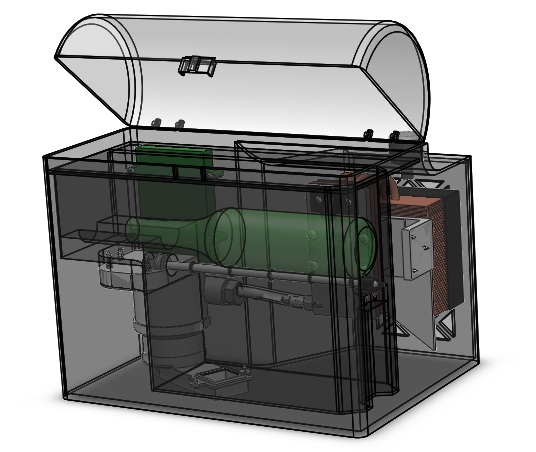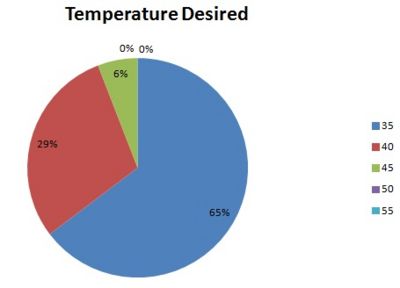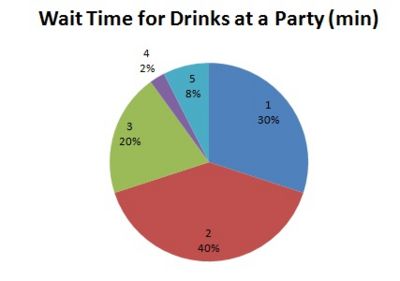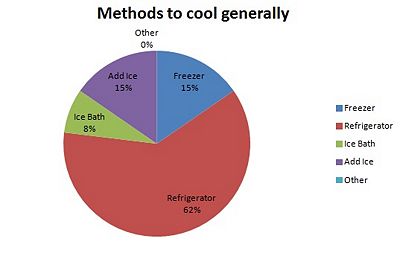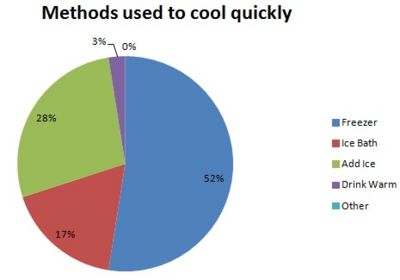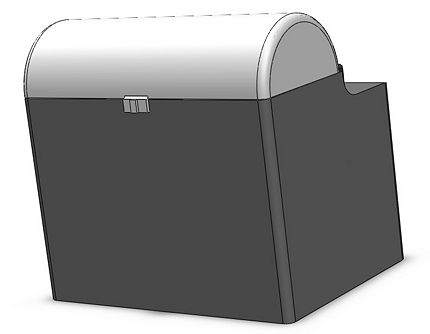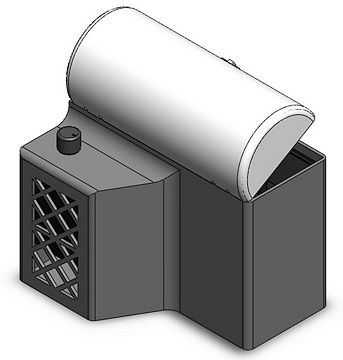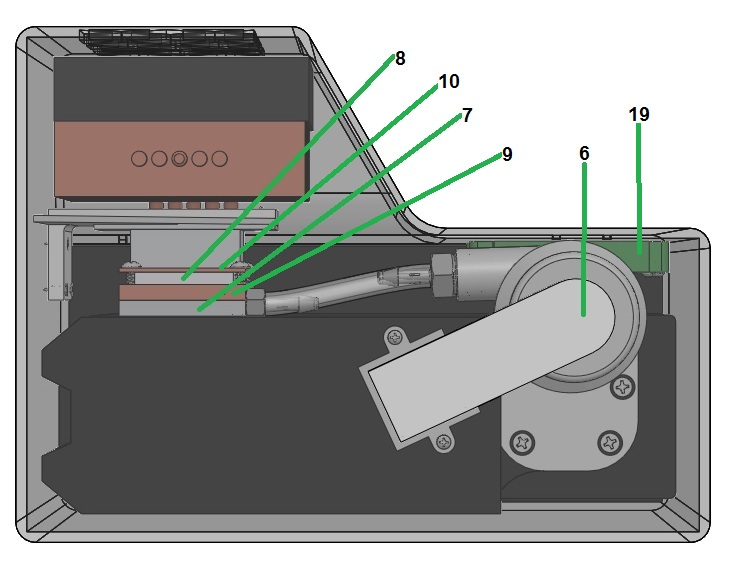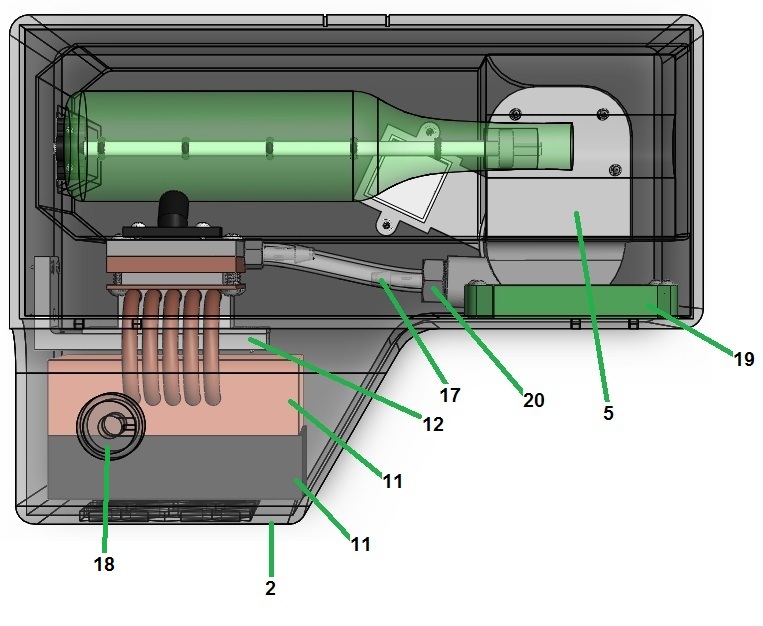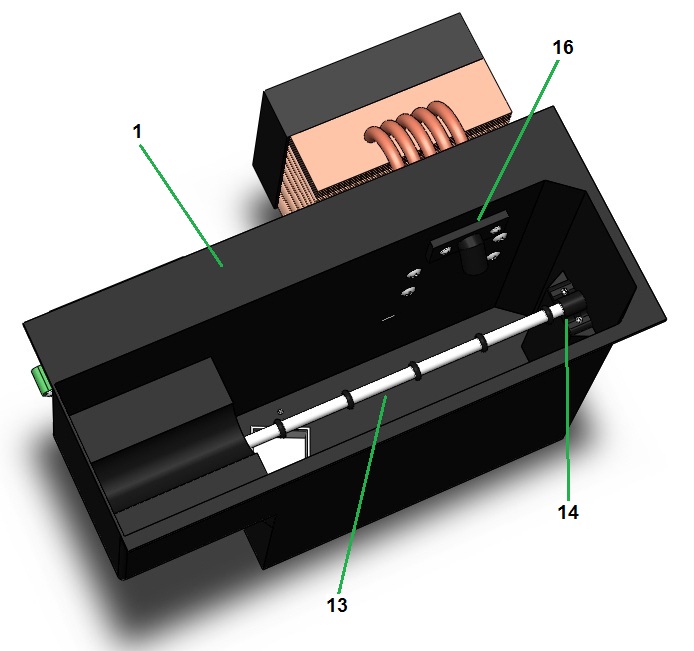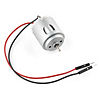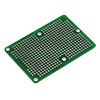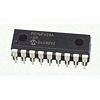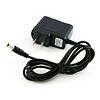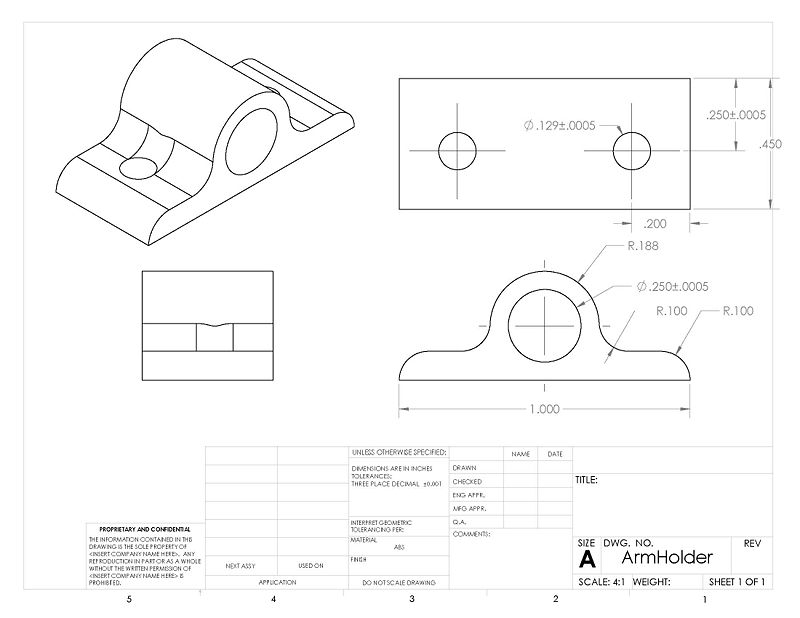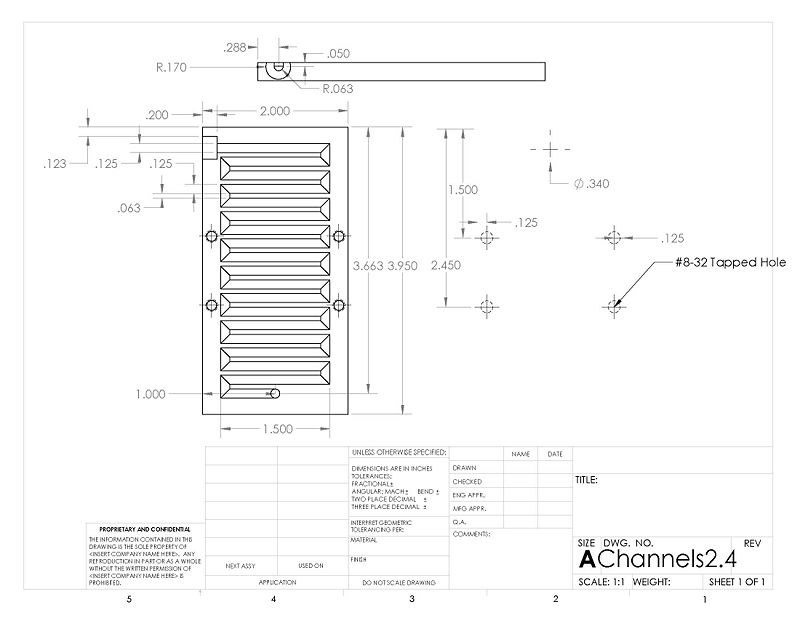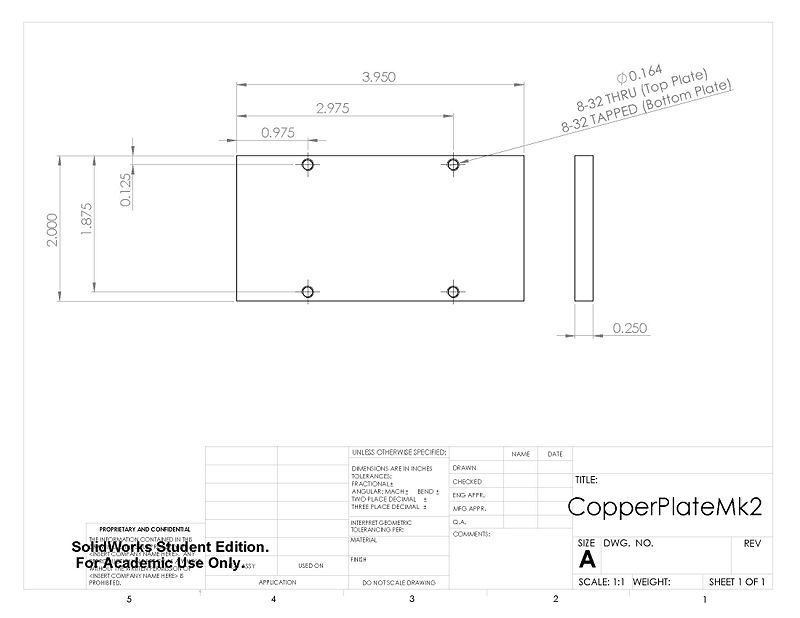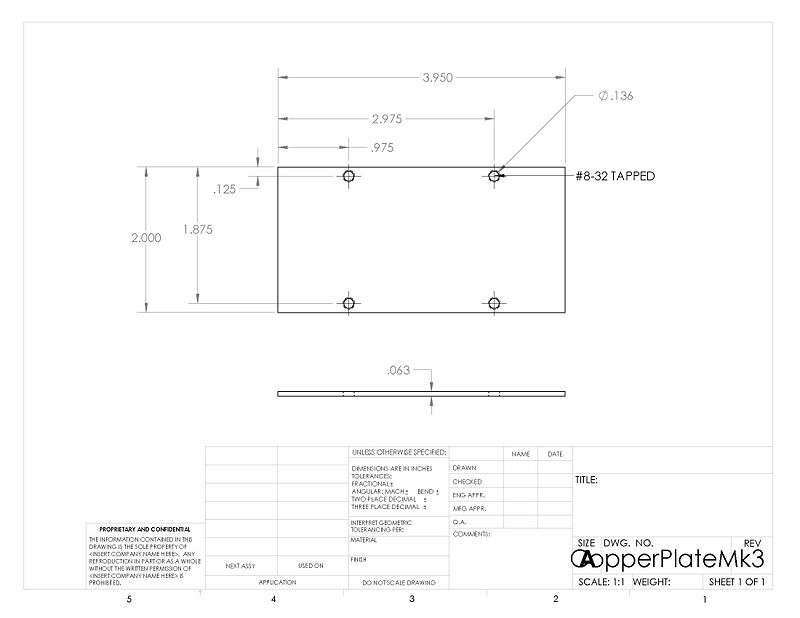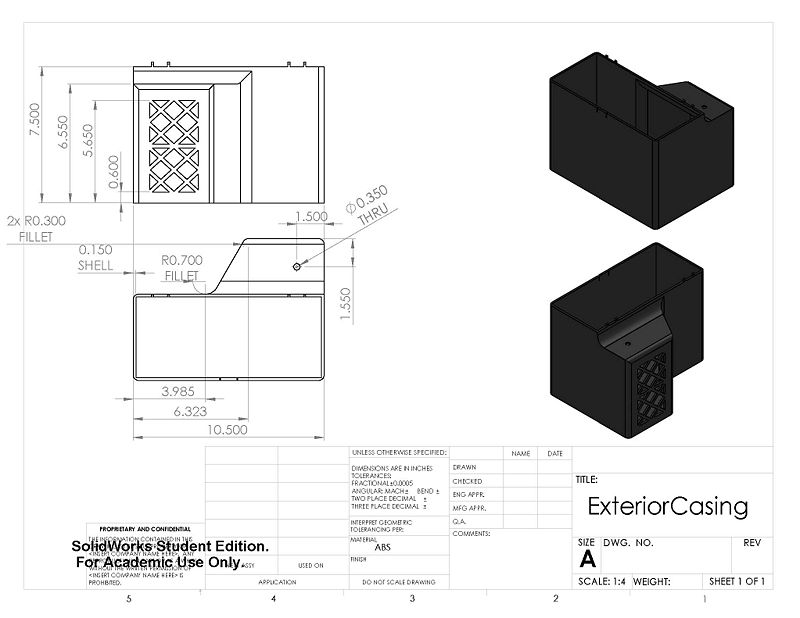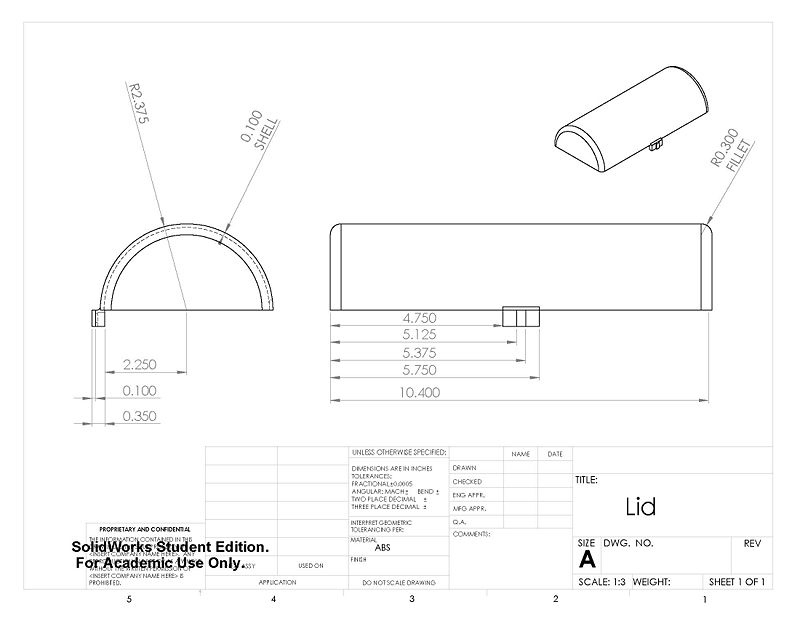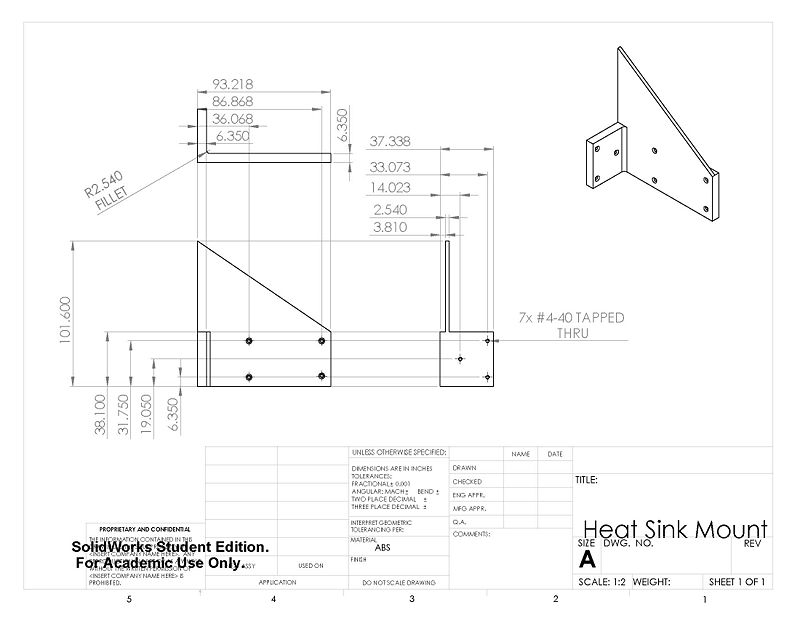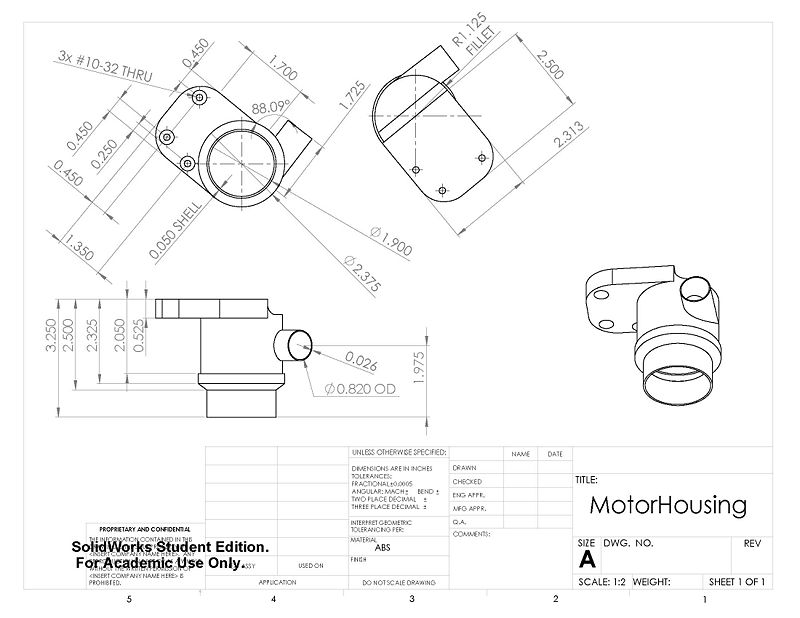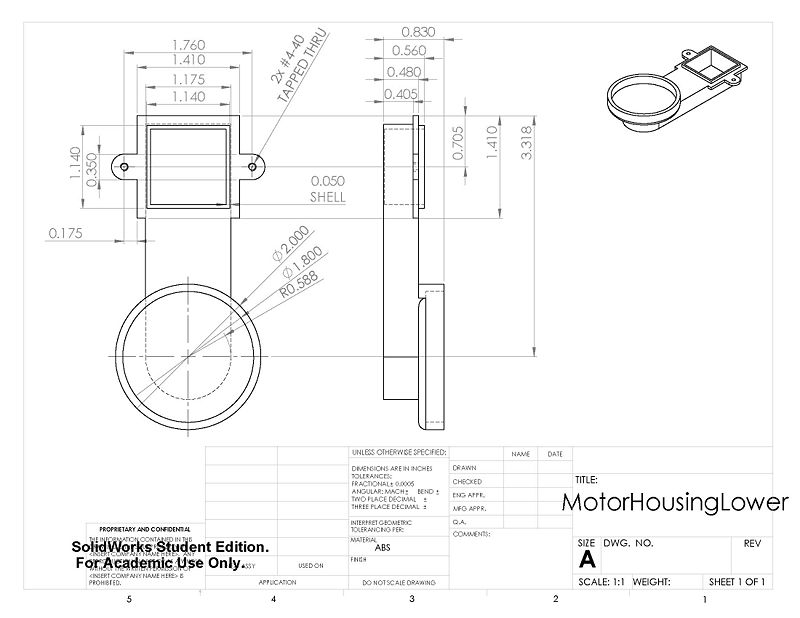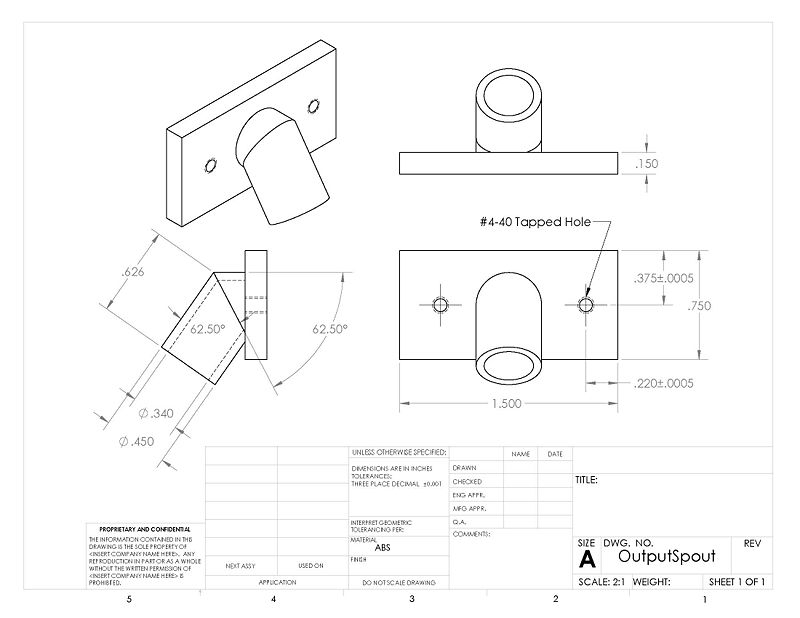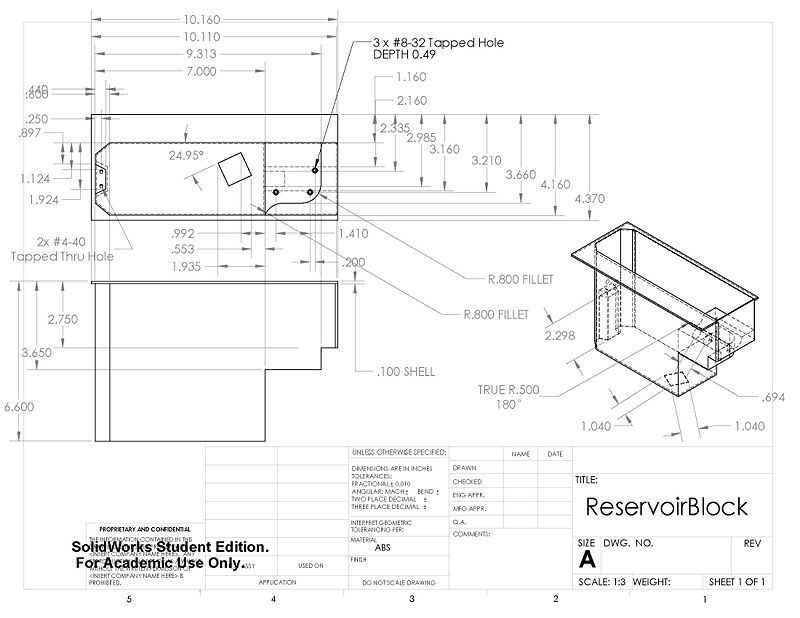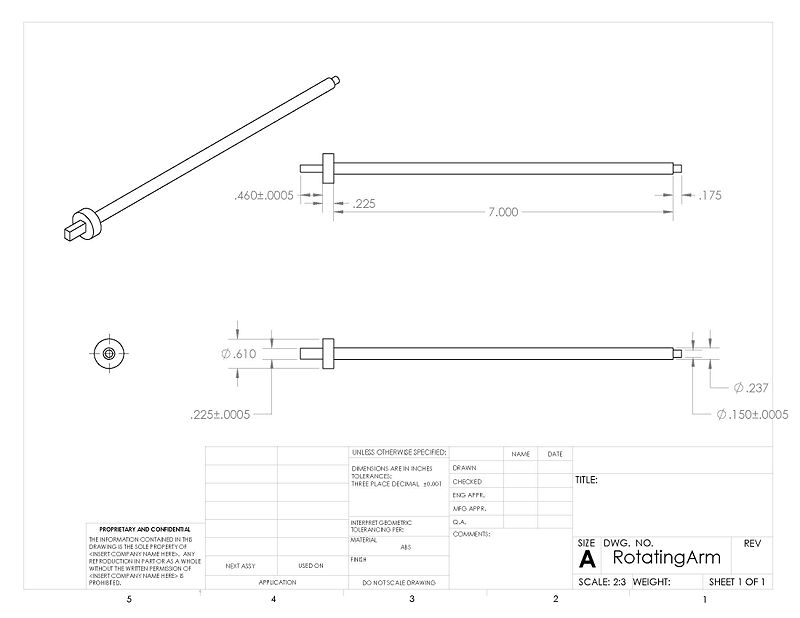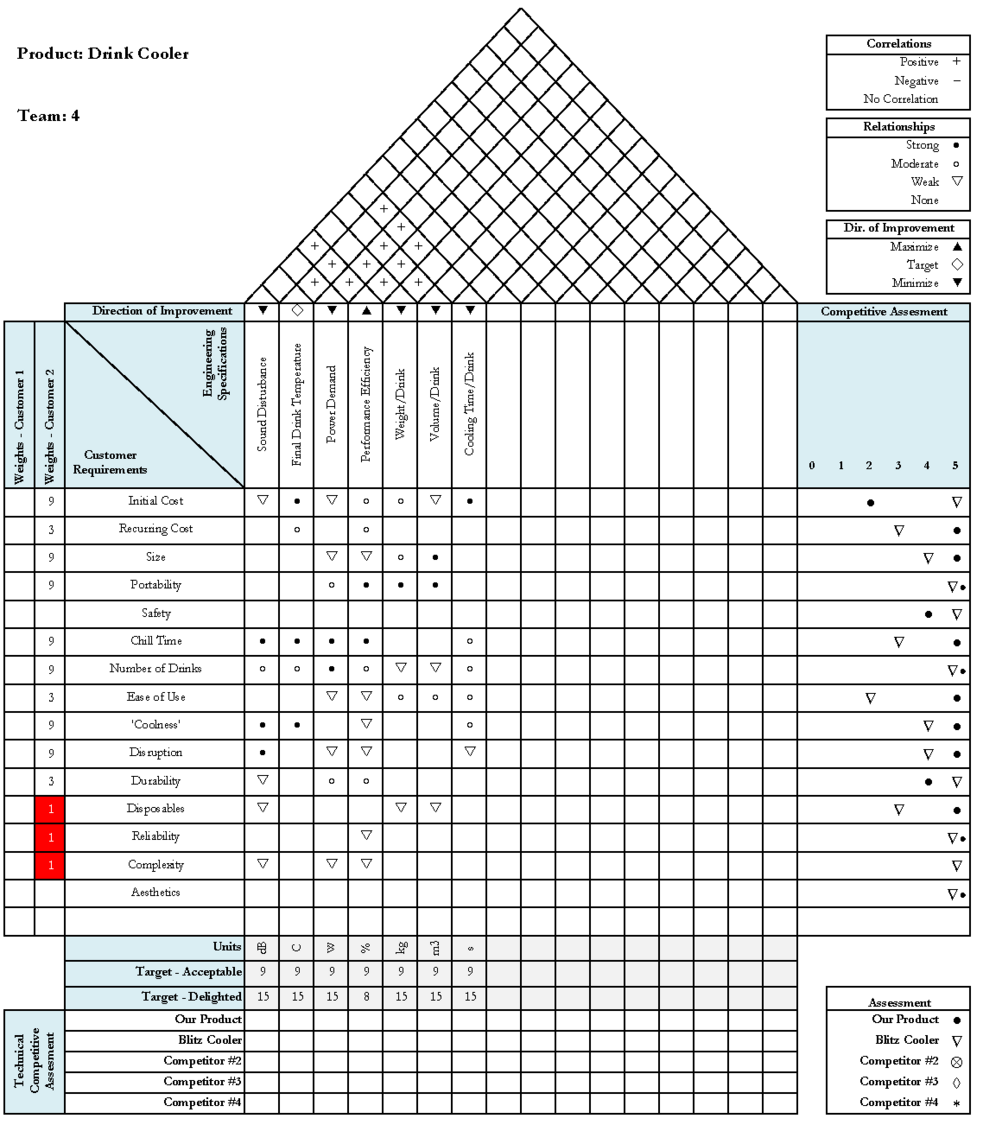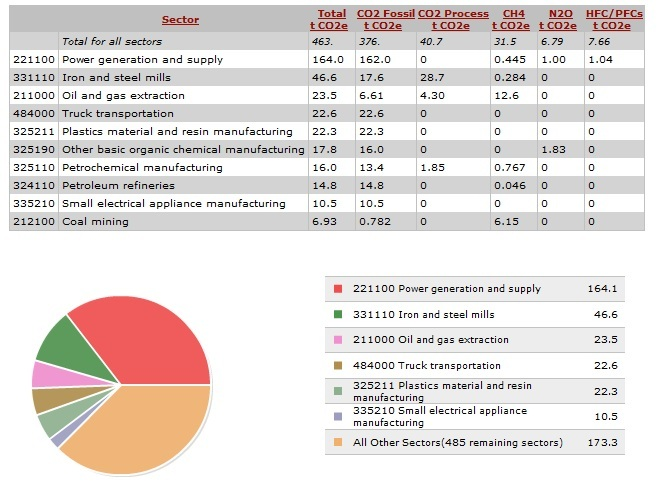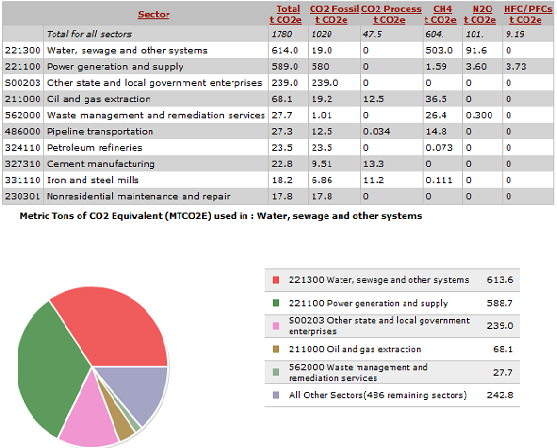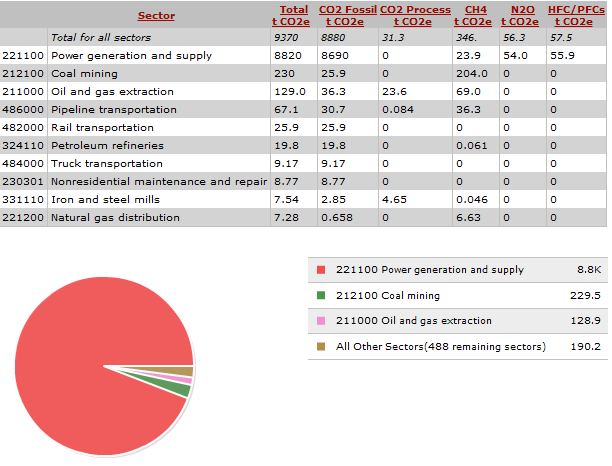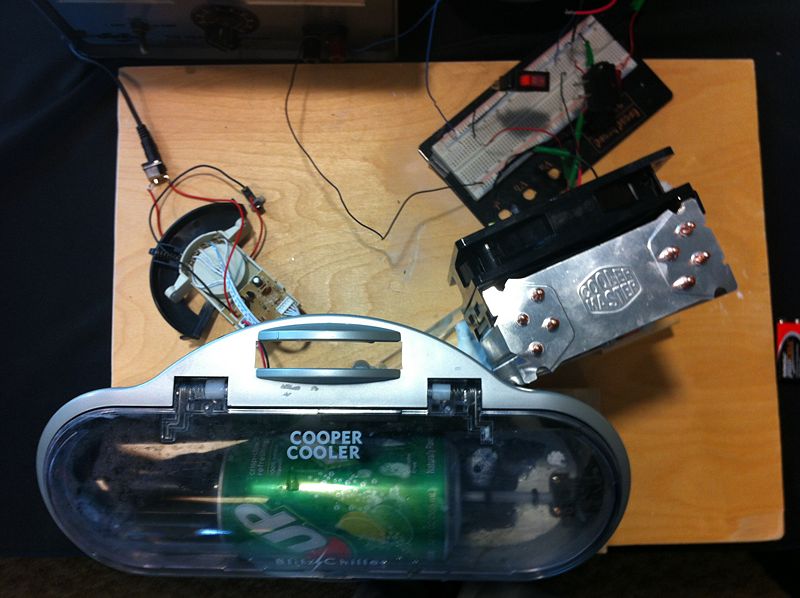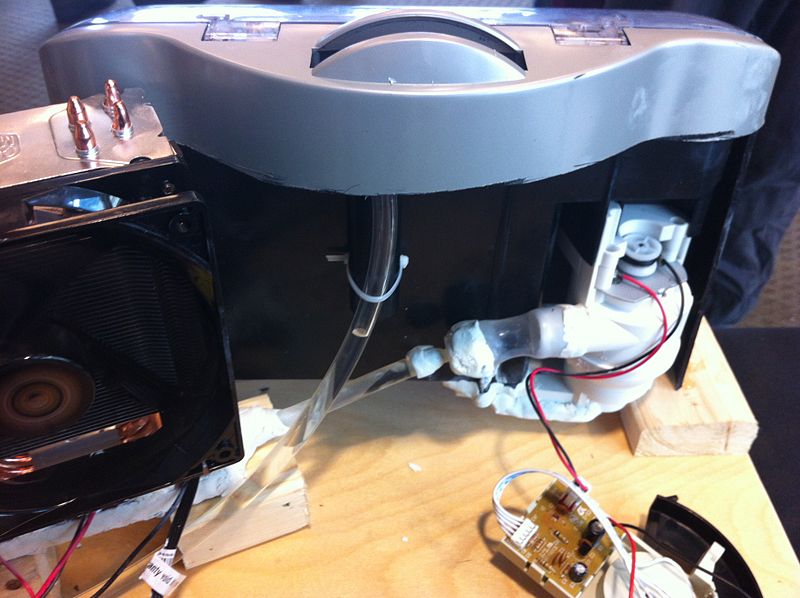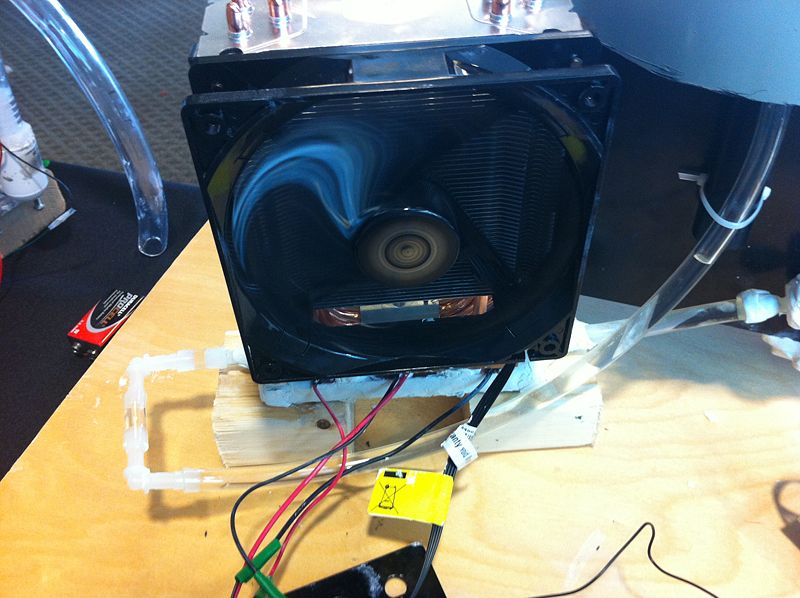Drink Cooler Innovation
From DDL Wiki
Contents
|
Executive Summary
The first survey we conducted revealed that people are often stuck in situations where they need to cool drinks quickly and indicated a need for a quick cooling device. Cruder methods of cooling such as using an ice bath are heavily dependent on the availability of ice and are messy to use. Our competitor’s product fails to overcome the requirement of ice in cooling drinks. User studies and interviews on our competitor’s product revealed that users felt inconvenienced by the need for ice to cool drinks in a purchased cooling machine. Our market research thus revealed a clear need for a product that cools drinks quickly without using ice.
The product we have developed fills this void by cooling drinks using a Thermoelectric cooling mechanism that can cool drinks with just the addition of water. By eliminating the need for ice, our product has incorporated a huge improvement over current household techniques and appliances (like our competitor’s product) used to cool drinks quickly. However, the incorporation of Thermoelectric technology into our product makes it more expensive than our competitor’s product. Nonetheless, a survey we conducted revealed that users value our product about 2-3 times as much as ice-based cooling products like our competitor’s. In addition, with about 22% responding that they would be willing to pay between $51-100 for our product (expected price range for our product), we believe that there may be a significant market for us to tap into. Since, our product is a moderately expensive luxury product, we suggest targeting the households in the top 25% of the economic strata.
Our product also seems to be either equivalent or better than our competitor’s when we analyzing its manufacturing and assembly process, failure modes and impact on the environment.
The manufacturing process for our product has been simplified by incorporating a single motor to run multiple functions. In addition, the focus on using a large number of standard parts further simplifies our manufacturing process. Our product has also been designed to ensure that the product can be assembled by press-fitting components from the bottom to the top. The process of manufacturing and assembly is very similar to that of our competitor’s because of the overlap of a large number of components and similar structural designs.
The breaking of internal seals, the failure of the motor and the failure of the Peltier cells were revealed to be the most significant modes of failure in our product. However, these modes of failure can easily be overcome through careful product design. The use of press-fits in our assembly process significantly reduces the risk of the internal seals breaking . In addition, testing the motor and Peltier cells to gauge their life would enable us to use appropriate motors and Peltier cells in our product and reduce the risk of failure by either motor or Peltier cell failure. With the exception of the additional low risk Peltier failure mode, our competitor seems to have similar failure mode concerns.
The biggest thrust for our product comes from its relatively low impact on the environment. While the production of the product would leave a minimal impact on the environment, the high electricity usage by the Peltier cells may put a more visible impact on the environment. However, the impact of our product on the environment is about 5 times smaller than that of our competitor’s product. Our product is thus much more ‘eco-friendly’ than our competitor’s product.
Our product is a venture into the realm of rapid, ice-free cooling techniques. Surveys and studies conducted revealed a strong demand for such a product. Eliminating the use of ice in our product not only makes it more convenient than our competitor’s product but also makes it more ‘eco-friendly’. Though our product may have a higher cost attached to it, surveys suggest a willingness among consumers to buy product. We thus suggest further studies to test the profitability of this innovative and highly desirable product.
Market Analysis
Market Research
First, we conducted a survey to get an understanding of the methods for rapid beverage cooling. Next, user tests were conducted with some of the popular methods to identify opportunities for innovation. These two studies were conducted before building the prototype. Finally, a second survey was conducted after the building of the prototype to determine the target audience's opinion towards our proposed product. Based on our research, we believe our product is likely to be profitable.
Survey 1
First, we sought to develop an understanding of our market. This would help us determine which potential opportunities to pursue in our product. So we created a survey to determine preferred drink temperatures, drink cooling methods, and how long they are willing to wait for their drinks to be cold. We distributed the survey at a social gathering and online and got over 45 useful responses.
Based on responses, we found that people like their drinks near ice-cold and are unwilling to wait for a drink. As seen in the graph below over 94% of the sample would like their drink to be under 40 degrees Fahrenheit. As seen in the graph on the right, only 10% would wait more than 3 minutes for their drink to be cooled and only 30% would wait more than 2 minutes as seen below in the graph. These findings provide evidence that there is a considerable market present for us to target.
Next, we wanted to find out what methods our target market used to cool their drinks. Survey respondents were asked what cooling methods they used regularly and what methods they used in a time crunch. Our findings show that 62% use a refrigerator in regular situations. In a time crunch people tend to use a freezer (62%), add ice cubes to drinks (28%), or use ice baths (17%). These results are shown in the graphs below. However, these rapid cooling methods seemed to have limitations. Freezers have a slow cooling time and drinks run the risk of bursting if forgotten. Putting ice cubes in drinks and or submerging drinks in ice baths requires having access to ice. Thus there was no effective rapid, ice-free cooling method.
Having seen in the survey that there is a demand for cooling drinks quickly, we decided to study the difficulties people faced with current quick cooling methods.
Anthropological Observation of Ice Bath/Freezer Usage
In this study, one of the group members hosted a small party with a case of 24 room-temperature canned drinks. Guests were provided access to two trays of ice, which was believed to be the typical amount present in most refrigerators. The guests chose to use an ice bath. This method successfully but slowly cooled a handful of drinks before the ice ran out. The drinks were pulled out when they were cool but not ice cold. The remaining drinks were placed in a freezer. These drinks were very slow to cool and were consumed at warm temperatures.
This study showed us weaknesses of both the ice bath method (ice requirement) and freezer method (too slow). This provides further evidence that there would be a strong demand for fast ice-free cooling techniques. We then decided to take a step further to see how our competitor’s product fared with respect to the more crude techniques of cooling drinks.
User Study for the Competitor’s Product
We conducted two user studies for our competitor’s product, the Blitz Chiller. The first study, the host was having an impromptu gathering on a weekend night with 5-6 guests. Unfortunately, the host did not have space in the refrigerator to keep drinks cool at all time and only had access to room temperature beer. Therefore they used the Blitz Chiller to chill their drinks. The second scenario observed was slightly different. A couple of users had just returned from the store having bought beverages on a weekend evening. They wanted to drink a beer each, but it was all at room temperature. They used the drink cooler to cool two beers for themselves.
In both cases, the users took about five minutes to figure out how to operate the machine. Once, they figured out how to operate the machine, they started cooling their drinks. However, there were a few problems we observed during the usage of the Blitz Chiller. The most important problem we noticed was that the Blitz Chiller cooled about 4 canned drinks with two trays of ice to a consumable temperature. Similar to the ice bath test, the quantity of ice was the limiting factor in this test.
In addition to the need for a large amount of ice, the Blitz Chiller had a few other drawbacks. First, it was a very loud machine. People were forced to speak louder than usual and the television volume had to be turned up. This is obviously not an ideal scenario. Second, the lid did not function well. On some occasions it would pop open while the device was running. Other times, it would take several tries to open. Also, the water proofing on the lid was weak and water dripped out constantly. Finally, changing the water was a hassle. This task is hard to do with just one person. The lid does not open fully, forcing the user to tilt the device at awkward angles to get the ice out. Pouring in new water is also a hassle for the same reason.
User Interviews for the Competitor’s Product
We followed up the user studies with user interviews. Users were interviewed to get a better understanding of their opinions on the product. The general consensus was that requirement of ice was a significant constraint to the usability of the product. Loading and changing ice into the device was time-consuming and clumsy. Also, a larger cooling capacity (multiple drinks at once) was desired. With the current one drink limit, this cooling method was not much more efficient than the alternative of an ice-water bath, which could be used to cool multiple drinks at once. The one drink limit also meant that somebody has to constantly be monitor the device to cool enough drinks. The noise generated by the device was also a problem. It made holding conversations in the same room as the device uncomfortable. In summary, the users felt that the current product had limited use. The requirement of ice and low capacity made it marginally better at cooling beverages than an ice bath yet more of a hassle. The noise didn't help. This made the device only practical for cooling 1-2 drinks at a time. One user suggested developing a product that doesn't need ice and marketing the product for a situation where users would not have access to a refrigerator.
Summary
From our survey, anthropological study, user studies and user interviews, it seems clear that there is demand for a quick cooling mechanism that does not use ice. We were thus convinced that our product would have a strong market. We proceeded to develop our product: an ice-free convenient way to cool drinks. After developing the product, we carried out another survey to gauge how much people value our product.
Survey 2
This survey was done after the prototype was completed to assess how much the consumers valued our product. The survey was completed by 60 individuals. The results are discussed below. Our findings show that there is a need for rapid ice-free cooling and that consumers are willing to pay enough money for it to make it profitable.
Our survey showed that over three-quarters of people have unexpected guests more often than once a month. In addition, when they do have guests, the have about 2-3 guests and would ideally like to have 3-6 cooled drinks ready to serve. However, they only have about 1-2 drinks cooled and ready to serve on a regular basis. This once again, reiterated the need for a product that could cool drinks rapidly.
One of the concerns with our prototype was that the drinks were not fully cooled to ice cold. So we sought to find the drink temperature that was considered to be "cold enough." Based on our survey this came out to be 40 degrees Fahrenheit for both beer and sodas. This temperature is a realistic target for our final product.
Next, we wanted to compare the practicality and usefulness of our product to that of the original competitor product. Our survey showed that the need for ice made the competitor product not practical for regular use. This was something we anticipated from our pre-prototype survey and users studies. The survey respondents also said that if the ice requirement was eliminated, the product would be 2-3 times as useful.
On average, survey respondents were usually willing to pay $26-50 to buy our product, which is well below the expected selling price. However, about 22% of users were willing to pay $51-100. This is a more realistic price range for our product and based on our survey there is a market that would be willing to pay this amount.
Product Development Economics
Data on the sales of our competitor’s product was unavailable. In addition, similar innovative cooling mechanisms by smaller companies did not have sales figures either. We thus looked at the production level of the most commonly available cooling device, the refrigerator. About 8 million refrigerators are sold every year in the USA. Assuming refrigerators are uniformly distributed among the various economic classes, about 2 million refrigerators are being used by the top 25% in the economic spectrum. We can thus look at these 2 million households, who feel the need for a cooling device, as our potential market. Assuming we can reach between 1-10% of this market, we are looking at a total production volume of between 2000 and 200000 over the lifetime of our product.
Using this estimate on the production volume of our product, we developed a ballpark estimate for the cost of manufacturing our product by focusing on the most costly components involved in making our product.
| Part | Cost ($/per part) |
| Motor | 3 |
| Housing | 6.15 |
| Peltier | 10.95 |
| Heat Sink Fan | 33.5 |
| Aluminium+Copper Block | 18 |
| Total Cost (Estimate) | 68.1 |
Using a mark-up of between 10-20% gives us a price range of $75-$82. Though this results in our product being more than twice as expensive as the Blitz Cooler, our survey results seem to suggest that there may still be a strong demand for our product.
Target Market
Based on our research the target market for our product will be upper-income households who enjoy luxury items and entertaining guests. Our market research demonstrated that there is a need for rapid drink cooling, which our product solves. However, our product is more of a convenience to have than a necessity. In addition, the product will be a fairly expensive item. As discussed above, the expected price of our product is upwards of $75. The survey results showed that most respondents felt that our product would be about 2-3 times as valuable as the Blitz Cooler and about 22% responded that they would pay between $51-$100 for our product. Thus the targeted households would have to have sufficient disposable income. We would suggest targeting the upper 25% of the economic spectrum in the United States, or household with incomes over $80,000.
Thus, though our product may be about twice as expensive as our competitor's product, we believe that there may still be a strong market for the product. We recommend the use of consultants to carry out a more thorough market analysis and product development economics study to understand the profitability of producing our product.
Design Documentation
Final Product CAD
Bill of Materials
Manufacturing Drawings
All manufacturing drawing for all custom components. All images may be clicked on to view a full size image of the drawing.
House of Quality
The House of Quality provided a competitive assessment of our product with respect to our competitor's product, the Blitz Chiller. From the analysis we see that our product is a clear improvement over the Blitz Cooler in aspects such as the recurring cost, the chill time, 'coolness' and ease of use.
However, our product fared worse than the Blitz Cooler in the area of intial cost. This, however, is a result of added functions such as improved chill time and the ease of use in our product. We believe these valuable additions justify the higher price attached to our product.
Another important aspect highlighted by the House of Quality is that customer requirements such as 'disposables', reliability, 'complexity' are not strongly related to our engineering requirements. We thus had to additionally incorporate these customer requirements in our product. While we have took care of the 'disposables' worry by eliminating the need for ice, we paid careful attention to the manufacturing process (as explained in DFMA) to ensure that our product is reliable and not unduly complex.
Design Analysis
Design for Manufacturing and Assembly
Many of the strengths and weaknesses regarding design for ease of manufacturing and assembly from the competitor's drink cooler were carried over into the proposed product. Our product incorporates many of the same parts used in the competitor product. The major difference is that our product has the additional water cooling block with the Peltier cells added in series with the competitor product's water circuit.
Manufacturing
One of the main strengths of the proposed product is that both the water pump and drink rotator operate on just one motor. A pair of bevel gears was used such that both devices could be operated from the same motor. This was critical to the design as it allowed the entire product to be both compact and cheap. This feature was carried over from the competitor product.
As many parts are possible were standardized. The only parts that are custom made are the external housing, heat sink mount, rotating bar, motor housing, water plumbing, and cooling block. The first five of these are all injection molded. Considering this device will be mass produced by the company, injection molding is probably the most efficient means of production. The cooling block had only one part that required machining (aluminum block with channels). This part can easily be mass produced with a CNC machine. The two copper blocks can simply be stamped out of sheet metal. The standardized components used in the design were the screws, springs, motor, pulley, circuit board, O-rings, Peltier cells, heat sink, and fan. This took advantage of the scale of production. In addition, it was designed such that only two drill-bit sizes were needed and all the holes could be drilled from as few setups as possible.
The major weakness with the product is the necessity of small tolerances throughout the liquid circulating system. This is necessary because the system needs to be water tight. This was also a concern in the competitor product. However, the goal of our project was to incorporate a Peltier cooling system and not to find a way to improve the tight tolerances. Thus this issue was not addressed in our work.
Assembly
The design was made in a way to ease assembly. A majority of the pieces fit into the external housing in order from bottom to top. In addition, most of the parts are press fit. These parts were designed to be round with guides. This allows for easy insertion that will snap into the correct position. These press fits also reduced the requirement for screws, which are tedious and would complicate the assembly. In addition, the water plumbing was joined with a flexible rubber connector. This improved the tolerances of the tubing. The custom parts were injection molded using two materials. One of for the external housing and one for the interior parts. Finally, the cooling block, Peltier cell, heat sink, and fan assemble was designed such that all parts could be easily assembled and fastened in a bottom-to-top order. The additional wiring necessary to power the Peltier cells was located to allow easy access to the both the motor and cooling assemble, which are the two parts that need electricity.
Comparison to Competitor Product
Since our product uses many of the same parts as the competitor product, many of the manufacturing and assembly solutions in the competitor product were carried over to the new product. The main new issues were those that were brought up due to the cooling assemble. These parts were all designed such that they were easily mass manufactured and assembled. Additional electronic components were needed to power the Peltier cells and the fan. These were integrated with existing circuit boards to facilitate easy assembly.
Design for Failure Mode and Effects Analysis
The Blitz Chiller has few failure modes that risk the safety of the user. The Failure Mode and Effect Analysis of the Blitz Chiller was accomplished using Risk Assessment Analysis Tables found in Engineering Design by Dieter and Schmidt (p 708-711). The method assigned numerical values from 1 to 10 for three different risk assessment categories: Severity (How severe the effects of failure are with 1 being no effect and 10 be severe danger to the user), Occurrence (How often will the failure occur with 1 being an extremely remote chance of occurrence and 10 being an extremely high chance of occurrence), and Detection (How easily the failure will be detected with 1 being a certainly detected failure and 10 being an impossible to detect failure). For each failure mode of the product a Severity score (S), an Occurrence score (O), and a Detection score (D), were assigned the product of these three values is called the Risk Priority Number (RPN).
Based on our analysis of our protoype, the only failure mode that could seriously endanger the safety of the user (a Severity score of 9 or 10) was the failure of internal water tight seals which could allow for the user to suffer an electric shock if the water short circuited the internal electronics.
The most likely failure, unrelated to intentional product misuse was failure of the motor due to an excessive number of cycles and wear. The motor would suffer slow degradation over time due to use and would eventually fail causing the product to become inoperable.
The most likely failure due to misuse or unintentional damage from falls would be from the lid of the unit breaking off. The hinges that connect the lid to the unit are small plastic pieces that could fracture during a fall or strong opening force. The lid breaking off would render the product unusable because of the prototype's built in safety feature that does not allow the product be operate when the lid is not properly closed.
The top three failures, based on the Risk Priority Number, are (in order) the Failure of Internal Seals (RPN = 90), Breaking of Back Hinges (RPN = 80), and Failure of Motor (RPN = 80). These represent the most likely and most severe failures of our product. Additionally, the failure of the Peltier Cell (RPN = 72) is a significant failure mode of the product because its failure would prevent the product from cooling beverages, rending the product functionless. Testing of the Peltier Cells under thermal and electrical loading for extended periods of time to simulation lifetime operation should be performed to ensure the product's continued functionality.
Overall, the prototype is extremely well designed from a Failure Mode and Effect Analysis perspective and the only major area for improvement would be in the connections between the lid of the product and the main body. It has many of the same failure modes as the competitor's product with the additional failure modes created by the addition of the Peltier Cell cooling loop and associated components. The physical simplicity of Peltier Cell cooling keeps the complexity of the system low and only add three additional failure modes compared to the competitor's product.
| Failure Mode and Effects Analysis | |||||||||
|---|---|---|---|---|---|---|---|---|---|
| Item & Function | Failure Mode | Effects of Failure | S | Causes of Failure | O | Design Controls | D | RPN | Recommended Actions |
| Peltier Cells - Produces Temperature Differential | Burnout/Overheating Failure of Peltier Cell | Reduced or no heat transfer | 8 | Excess amperage or heat sink failure | 3 | Power regulator for Peltier Circuit and passive cooling heat sink | 3 | 72 | Design circuits to prevent burnout and stop operation if overheating |
| Heat Sink - Cools hot side of Peltier Cell | Heat sink fan failure | Significantly less heat removal from the Peltier Cell | 7 | Failure due to extended use | 2 | Testing of heat sink fan to functionally test operational lifetime | 4 | 56 | Use of high reliability heat sink fans to reduce chance of fan failure during product lifetime
|
| Heat Transfer Channels - Controls cooling water flow through system | Channel blockage | Reduced of stopped cooling water flow | 7 | Foreign object in cooling loop | 4 | Grate/filter on pump inlet to prevent foreign material from entering cooling loop | 2 | 56 | Direct user to only add clean (particle free) water to system when operating
|
| Motor - Powers rotational bar and pump | Burnout | Reduced or no motor output | 8 | Heat, excess voltage | 5 | Voltage input regulator for motor | 2 | 80 | Design circuits to prevent burnout |
| Motor Shaft - Transfers mechanical power in pump | Break | No motor output, product inoperable | 8 | Fatigue | 5 | Material properties prevent fatigue failure based on life time and maximum stresses | 2 | 80 | Stronger material to reduce chances of fatigue failure. |
| Internal Seals - Prevent leakage of water into the body of cooler | Cracks and shrinks, pulling away from surfaces | Higher probability of short circuiting electrical components | 9 | Material fatigue over time | 5 | Visual inspections on line, material properties that allow for repeated thermal and stress cycling | 2 | 90 | Use materials that are not affected by sudden temperature changes and do not significantly degrade over time. |
| Front Latch - Keeps lid of Cooler closed | Latch breaks at hinges and spring and will not keep Cooler closed | Product will not function with an open lid. Product inoperable | 8 | Fatigue or excessive stresses | 4 | Use materials that can withstand maximum expected stresses and fatigue | 1 | 32 | Use a different material for hinges, such as metal, to reduce likelihood of failure. |
| Back Hinges - Limit range of motion of lid and attach it to body | Plastic hinges break | Product will not function without a closed lid. Product inoperable | 8 | Fatigue or excessive stresses | 5 | Use materials that can withstand maximum expected stresses and fatigue | 2 | 80 | Allow for wider range of motion so that user does not try to force machine open |
| Limit Switch - Prevents product from operating without a closed lid | Switch becomes stuck always on or always off | Product may function without lid if stuck on or never function if stuck off | 9 | Fatigue | 3 | Design limit switches to survive lifetime of product without failure | 2 | 54 | Test limit switches to ensure they will survive necessary number of cycles |
| Connector - Connects front latch mechanism to limit switch to indicate if lid is closed | Breaks along length or at ends and becomes misaligned | Product may function without lid if stuck on or never function if stuck off | 8 | Stress or impacts | 3 | Simple design minimizes pieces that can become misaligned | 2 | 48 | Ensure that connection is not easily broken in small drops or impacts |
| Timer Wheel - Completes electric circuit and allows user to select how long the production functions for | Internal spring becomes jammed, preventing the user from changing the setting of time | User may be unable to turn on or off machine, or change time settings | 8 | Impacts or fatigue | 3 | Simple design minimizes parts that can become stuck or fatigue | 2 | 48 | Ensure that materials chosen can withstand expected stresses and fatigues. |
| Beverage Bar - Supports beverage and spins the beverage during operation | Bar fractures along length | Unit will become inoperable | 8 | Excessive force | 3 | Metal rod through center of beverage bar increases strength | 1 | 24 | Proper supports on end of may help to reduce stress along bar when loaded |
| Beverage Bar O Rings - Attached to bar and increase friction between bar and beverage to promote rotation | O Ring surface wears away over time | Unit will less effectively spin the beverage | 5 | Prolonged use over time | 2 | O Rings sit in a recessed groove to ensure they remain in place to contact beverage even if surface degrades | 2 | 20 | Better material selection for O Rings may reduce degradation of surface of O Ring over time |
| Gears - Transfer motion of motor to beverage bar | Gears may grind becoming misaligned | Unit will function sub optimally and produce undesirable noises | 7 | Prolonged use over time | 4 | Use of rubber belts will reduce potential for build up of stress in gears, belts will slip first | 1 | 28 | Better material choice for gears can reduce degradation of gears over unit lifetime |
Design for Environment
When we tried to compute the impact our product had on the environment over the course of its lifetime we considered the material extraction, production, use, end of life and transportation of the product. We did a green house gas impact analysis using the EIOLCA tool separately for the production and the use of the product. Once this was complete we compared it to the analysis for our competitor product.
Production
For the production section we used the Small Appliances Manufacturing(335210)sector. Given that one product costs about $75 at producer price. Running the model for this sector we found that for every $1 million spent on manufacturing the plastic product 463 metric tonnes of CO2 were released. The break up for each sector is below. Scaling this down for $75 we found that through the life cycle of this product it uses 0.032 metric tonnes of CO2 which @$30 tax a metric ton works out to be $0.97. Hence the greenhouse gases emitted when manufacturing the product is not that significant.
Use
Our Product uses a lot of electricity to run the Peltier Cells. The only other raw material required is water which is reusable. By our estimate if the machine is run once every 2 weeks and at every occasion half a litre of water is required then over the course of its lifetime (5 years) the product would have used 65 litres of water. The use study done first on Water, sewage and other systems (Sector 221300) for 65 litres that will be used in the lifetime of the product yielded very insignificant results. A thousand gallons of water cost $1.5 (according to 2002 results) hence our product uses water costing $0.021. Running the model for GHG emissions for $1 million activity we found it releases 1780 tonnes of CO2. ¬Scaling for 0.021 we found that over the lifetime of this product the use of water contributes to $ 0.000038.
The energy consumption however is much more significant. Since we are running 2 Peltier cells at 100 Watts each, a fan and a motor. The overall consumption of the machine is 250Watts. Hence assuming it runs for 0.8 hours every week and hence 208 hours a year for 5 years. The total consumption for this device in its lifetime is 260 KWH. Since the cost of 1kWH is $ 0.09 the device consumes electricity worth $23.4. Running the model for the sector 221100 – Electrical power generation we found that $ 1 million spent on electricity releases 9370 tonnes. Hence over the course of the products lifetime it will release 0.22 tonnes of gas, which at a $30 tax amounts to $ 6.67. This is far more significant than either the manufacturing or water usage.
Competitor Product – The Blitz Chiller
Production
The Blitz Chiller has the same environmental impact as our product except that it has a slightly lower cost due to the absence of Peltier cells. We ran the same model for the manufacturing of this product, Small Appliances Manufacturing (335210) sector however at a producer price of $35. Hence its emission of gas is at 0.016 tonnes and tax is valuated at $0.48, marginally lower than our product.
Use
This product uses a lot of ice, which is used to cool the beverage down to the required temperature. During the user study we found that one tray of ice cools about 2 cans effectively before warming up to an unusable degree. We estimate that about 1000 trays of ice will be used in the lifetime of the product. The raw materials required for ice are basically water and electricity. This is a significant amount of ice to be made using refrigeration. The use study done first on Water, sewage and other systems (Sector 221300) for 260 litres or 68.7 gallons that will be used in the lifetime (2 litres per use) of the product yielded very insignificant results compared to energy requirements. This is almost 4 times the amount of water over our product and still the overall C02 tax will be $ 0.00012. (See graphs and other numbers in the water calculations done for our product design) For the electricity requirements we estimated that it would take an hour to cool 4 trays of ice. A refrigerator used 1 KWH of power and hence assuming the product used 1080 into 4 trays of ice pre use. We will need 1080 KWH of power which is exactly 4 times the amount needed to power the Peltier. This is very significant as in this case the device should now pay a tax of $26.50 over the course of its usage.
Overall Analysis and Conclusions
The carbon dioxide tax would make a significant impact on the cost of the product. The highest contributor to the tax is power generation and supply which contributes over 32% of the emissions with other sectors as iron and steel mills contributing 21%. However other than these two sectors all other sectors contributed less than 5% of overall emissions. We found that the overall tax on the product due to CO2 emissions was fairly significant mostly due to the use of electricity. While the manufacturing of the product or the usage of water is not significant in terms of environmental impact the sheer amount of power used should warrant a tax of $6.67 on our product. However this is significantly less than what our competitor should be taxed for the amount of ice needed for its product. Hence we believe we have reduced the environmental impact by a fair amount while more improvements could be made by using more efficient Peltier cells in the future.
Mechanical Analysis
The analysis of our product focused on the capabilities of the Peltier Cells to quickly cool the water bath and beverage. A model of the system was built that incorporated the cooling channels and block, copper plates, Peltier Cells, and the heatsink and fan. A thermal resistance model was developed and used to reveal bottlenecks in heat transfer and simplify the calculation process. Equations for heat transfer on both the hot and cold side of the Peltier Cell were derived and the convective heat transfer on the heat sink and in the flow channels was modeled by solved for the convective heat transfer coefficient. Analyses were performed on the model of the prototype at four different Peltier Cell amperages to examine the effect of increased amperage on cooling power and to examine if the model matched experimental data.
After solving for the conditions at the four different amperage levels, is shown that the experimental cooling rate of 0.75 °C/minute was comparable to the theoretical cooling rate of 1 °C/minute at a similar amperage level. To improve the performance of the product, two solutions were shown based on the numerical analysis. First, thermal analysis revealed how improvements to the heat sink or heat removal from the hot side of the Peltier Cell could reduce cooling time. Second, an increase in the number of Peltier Cells, each with it's own heat sink, could dramatically reduce cooling time. The thermal analysis of the prototype helped to both partially validate the design of our model while also giving new insight on areas of improvement.
The Mechanical Analysis Report which details the equations, method, and numbers used can be accessed by clicking the link below:
Prototype Documentation
The prototype demonstrated the ability to chill water for cooling drinks without the need for a disposable cooling catalyst. The prototype used the same housing, electronics, mechatronics and fluid dynamic system as the original competitor product, but has been modified to cool water using Peltier cells rather than melting ice. The top view and a view of the modifications made are shown below. To accommodate bend radii and the size of the heat sink, a large portion was removed from the back of the product’s shell. The piping of the competitor product was adapted to fit the smaller piping of the new design, and between the outlet of the motor housing and the water spout the Peltier cooling assembly was inserted. Water is passed through channels milled in a piece of aluminum. Closing off the channels on top is a copper block, followed by a pair of Peltier cells in series, followed by another copper block. This assembly uses the thermoelectric effect to chill the metal blocks and channels, in turn chilling water as it flows through the channels. Initial testing determined that the volume of water to be chilled was too great for the Peltiers the group used to effectively chill it, so pieces that we cut off from the shell were retrofitted to decrease the size of the reservoir of the existing product. This resulted in a drop in water pressure across the system, but the bulk temperature of the water could decrease much more quickly.
Waterproof putty was used to seal pipe interfaces and the cooling block itself. After several unsuccessful attempts to seal the piping, the putty proved to be by far the most effective. A special power supply is required to operate the Peltier Cells at higher capacity than the standard wall socket would allow. A third Peltier is connected to the others in series and dunked in a separate water bath to act as a resistor for the cooling cells. Peltiers operate optimally at both a high current and potential, making the circuitry required to run them at peak power require components not normally available commercially. A computer heat sink and mounted fan is thermally connected to the hot side of Peltiers with thermal paste. This can be seen in the image below.
When run for a six minute cycle, the bulk temperature of the water is decreased by 10 °F. A drink placed on the rotating arm and sprayed with water for a similar timescale experiences comparable cooling effects.
Though this prototype demonstrates all the key components and features of the final product design, it is very different from a product that might be produced. In the final design, all of the exterior and interior housing will need to be custom designed and manufactured. Similarly, the motor housing assembly, which holds the gearing, belts, rotating arm and turbine will all need to be fabricated from scratch. The arrangement of components is space optimized, and a much smaller heat sink and fan is utilized, reducing the overall footprint of the design to be similar to competitive levels. The cooling assembly itself has been repositioned and shortened significantly. Since the final product does not operate under some of the space constraints of the competitor product, the cooling assembly can be positioned against the reservoir block, and its outlet connects directly to the water spout. Metal parts in the final design can be redesigned for stamping rather than machining, allowing multiple units to be made at the same time, and with lower materials costs, lead times, and wastes. The rest of the components are made out of a combination of PVC and ABS plastics, which are injection molded to produce a consistent and easily reproducible product. The capital required for these operations is considerable, but for high volume production is very practical.
The user feedback did not add much to the design or prototype. The primary goal of eliminating the need for ice was verified by users as a definite need, but other issues addressed by users were not addressed, or in fact worsened by our prototype. Users wanted a product that cooled faster, was not as loud, was easier to drain, was smaller in size than the competitor product or the prototype. Removing the rear shell for our prototype increased the noise, the bench top setup made it large and fragile, and the massive cooling assembly and heat sink greatly increased the floor plan of the product. We feel that worsening these problems was justified by the fact that this is a prototype, and the focus was demonstrating the ability to cool without ice. While all of the user's needs must be better met further in the product development cycle, our goal is to convince investors that a drink cooler with Peltier technology is viable and should be further developed.
Design Process
Overall, the team worked very effectively in accomplishing tasks. The team had regular weekly meetings where the entire team would be updated on the status of the project and plan goals for the future. All major coordinating and scheduling was done at the meetings. Minor issues were dealt with via email. The team roles were quite fluid and people helped out an all aspects of the project. The main three divisions were the electrical circuit, water circuit, and CAD model. Arvin, Ojas, and Dhruv worked on the electrical circuit. Pat, Charlie, Dhruv, and Ojas worked on the water circuit. Finally, Arvin and Charlie worked on the CAD model. All members worked together on compiling the final report.
Our prototype is not ready for production. The purpose of our prototype is to demonstrate that we are capable of developing a Peltier cooling system that is capable of cooling the water coolant. Our current setup will reach a steady state temperature of 10 degrees Celsius below room temperature. However, this temperature is limited by the poor quality of the electrical circuit used. The members of this team have neither significant expertise nor experience with electronics. Currently, the prototype only had two Peltier cells operating at a total of nine amps. As shown by the mechanical analysis, additional Peltier cells need to be added into the product to increase the cooling power. However, in order to do so the total amperage of the product will increase. Special electronic circuits will need to be made that can handle these levels of current. Thus we recommend that research be conducted on developing a high current circuit. According to some Carnegie Mellon electrical engineers, such a circuit is possible with the use of transformers but is beyond the abilities of this design team.
